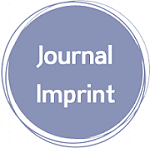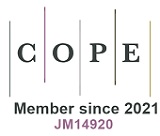Appendiceal Neoplasms: Diagnosis, Management and Follow-up
Downloads
Appendicectomy is one of the most performed surgical procedures. Neoplasms of the appendix are identified in approximately 1% of appendiceal specimens, and the incidence seems to be rising. The aim of this review was to summarize the current data on these neoplasms, focusing on the recent classification, clinical manifestations, management, and follow-up of such patients, which remain under debate. A literature search was performed using the database PubMed. The keywords used were related to appendiceal neoplasms, mucocele, pseudomyxoma peritonei and treatment. Records without abstracts, case reports, opinion articles and experimental studies were excluded. The appendix tumors can be classified between epithelial or nonepithelial. The epithelial variant is composed by mucinous neoplasms, nonmucinous adenocarcinoma, and signet ring cell tumors; instead, neuroendocrine tumors, lymphoma, and sarcoma are included in nonepithelial neoplasia. Goblet cell carcinoids share characteristics of both epithelial and nonepithelial tumors. The clinical presentation can be variable and the algorithm for evaluation and treatment is complex. Treatment is based on stage and histology. Our intention is to clarify some questions and help the surgeon in operative decisions, treatment strategies, and patient counseling.
Doi:10.28991/SciMedJ-2021-0303-9
Full Text:PDF
Downloads
Deaver, J. B. (1905). Appendicitis. Philadelphia: P Blakiston’s Son & Co.
Williams, G. R. (1983). Presidential Address: A History of Appendicitis. Annals of Surgery, 197(5), 495–506. doi:10.1097/00000658-198305000-00001.
Cope, Z. (1965). A history of the acute abdomen. Oxford University Press, USA.
Major, R. H. (1945). Classic descriptions of disease: with biographical sketches of the authors. Charles C Thomas Pub Limited.
McBurney, C. M. (1889). Experience with early operative interference in cases of disease of the vermiform appendix. New York State Journal of Medicine, 50, 676-684.
Barrett, M. L., Hines, A. L., & Andrews, R. M. (2013). Trends in rates of perforated appendix, 2001–2010: statistical brief# 159. Available online: https://www.hcup-us.ahrq.gov/reports/statbriefs/sb159.pdf (accessed on May 2021).
McCusker, M. E., Coté, T. R., Clegg, L. X., & Sobin, L. H. (2002). Primary malignant neoplasms of the appendix. Cancer, 94(12), 3307–3312. doi:10.1002/cncr.10589.
Spanos, C. P., & Kaiser, A. M. (2016). Appendiceal Neoplasms. The ASCRS Textbook of Colon and Rectal Surgery, 617–629. doi:10.1007/978-3-319-25970-3_37.
Marmor, S., Portschy, P. R., Tuttle, T. M., & Virnig, B. A. (2015). The Rise in Appendiceal Cancer Incidence: 2000–2009. Journal of Gastrointestinal Surgery, 19(4), 743–750. doi:10.1007/s11605-014-2726-7.
Whitfield, C. G., Amin, S. N., & Garner, J. P. (2012). Surgical management of primary appendiceal malignancy. Colorectal Disease, 14(12), 1507–1511. doi:10.1111/j.1463-1318.2012.03052.x.
McGory, M. L., Maggard, M. A., Kang, H., O’Connell, J. B., & Ko, C. Y. (2005). Malignancies of the Appendix: Beyond Case Series Reports. Diseases of the Colon & Rectum, 48(12), 2264–2271. doi:10.1007/s10350-005-0196-4.
Maggard, M. A., OConnell, J. B., & Ko, C. Y. (2004). Updated Population-Based Review of Carcinoid Tumors. Annals of Surgery, 240(1), 117–122. doi:10.1097/01.sla.0000129342.67174.67.
Alexandraki, K. I., Kaltsas, G. A., Grozinsky-Glasberg, S., Chatzellis, E., & Grossman, A. B. (2015). Appendiceal neuroendocrine neoplasms: diagnosis and management. Endocrine-Related Cancer, 23(1), R27–R41. doi:10.1530/erc-15-0310.
Carr, N. J., Cecil, T. D., Mohamed, F., Sobin, L. H., Sugarbaker, P. H., González-Moreno, S., … Moran, B. J. (2016). A Consensus for Classification and Pathologic Reporting of Pseudomyxoma Peritonei and Associated Appendiceal Neoplasia. American Journal of Surgical Pathology, 40(1), 14–26. doi:10.1097/pas.0000000000000535.
Carr, N. J., Bibeau, F., Bradley, R. F., Dartigues, P., Feakins, R. M., Geisinger, K. R., … Yantiss, R. K. (2017). The histopathological classification, diagnosis and differential diagnosis of mucinous appendiceal neoplasms, appendiceal adenocarcinomas and pseudomyxoma peritonei. Histopathology, 71(6), 847–858. doi:10.1111/his.13324.
Legué, L. M., Creemers, G.-J., de Hingh, I. H. J. T., Lemmens, V. E. P. P., & Huysentruyt, C. J. (2019). Review: Pathology and Its Clinical Relevance of Mucinous Appendiceal Neoplasms and Pseudomyxoma Peritonei. Clinical Colorectal Cancer, 18(1), 1–7. doi:10.1016/j.clcc.2018.11.007.
Pai, R. K., Beck, A. H., Norton, J. A., & Longacre, T. A. (2009). Appendiceal Mucinous Neoplasms. American Journal of Surgical Pathology, 33(10), 1425–1439. doi:10.1097/pas.0b013e3181af6067.
Valasek, M. A., & Pai, R. K. (2018). An Update on the Diagnosis, Grading, and Staging of Appendiceal Mucinous Neoplasms. Advances in Anatomic Pathology, 25(1), 38–60. doi:10.1097/pap.0000000000000178.
Ruoff, C., Hanna, L., Zhi, W., Shahzad, G., Gotlieb, V., & Saif, M. W. (2011). Cancers of the Appendix: Review of the Literatures. ISRN Oncology, 2011, 1–6. doi:10.5402/2011/728579.
Sugarbaker, P. H. (2006). The natural history, gross pathology, and histopathology of appendiceal epithelial neoplasms. European Journal of Surgical Oncology (EJSO), 32(6), 644–647. doi:10.1016/j.ejso.2006.03.016.
Sugarbaker, P. H. (2009). Epithelial Appendiceal Neoplasms. The Cancer Journal, 15(3), 225–235. doi:10.1097/ppo.0b013e3181a9c781.
Compton, C., Fenoglio‐Preiser, C. M., Pettigrew, N., & Fielding, L. P. (2000). American joint committee on cancer prognostic factors consensus conference: colorectal working group. cancer, 88(7), 1739-1757.
Ronnett, B. M., Zahn, C. M., Kurman, R. J., Kass, M. E., Sugarbaker, P. H., & Shmookler, B. M. (1995). A Clinicopathologic Analysis of 109 Cases with Emphasis on Distinguishing Pathologic Features, Site of Origin, Prognosis, and Relationship to “Pseudomyxoma Peritonei.” The American Journal of Surgical Pathology, 19(12), 1390–1408. doi:10.1097/00000478-199512000-00006.
Pai, R. K., & Longacre, T. A. (2005). Appendiceal mucinous tumors and pseudomyxoma peritonei: histologic features, diagnostic problems, and proposed classification. Advances in anatomic pathology, 12(6), 291-311. doi:10.1097/01.pap.0000194625.05137.51.
Misdraji, J. (2013). Tumors of the appendix. Morson’s and Dawson’s Gastrointestinal Pathology. London: Wiley; 490–498.
Lundqvist, M., & Wilander, E. (1986). Subepithelial neuroendocrine cells and carcinoid tumours of the human small intestine and appendix. A comparative immunohistochemical study with regard to serotonin, neuron-specific enolase and S-100 protein reactivity. The Journal of Pathology, 148(2), 141–147. doi:10.1002/path.1711480204.
Shaw, P. A. V. (1991). The topographical and age distributions of neuroendocrine cells in the normal human appendix. The Journal of Pathology, 164(3), 235–239. doi:10.1002/path.1711640308.
Komminoth, P., Arnold, R., Capella, C., Klimstra, D. S., Klöppel, G., Solcia, E., & Rindi, G. (2010). Neuroendocrine neoplasms of the appendix. WHO classification of tumours of the digestive system, 126-128.
Pape, U.-F., Perren, A., Niederle, B., Gross, D., Gress, T., Costa, F., … Grossman, A. (2012). ENETS Consensus Guidelines for the Management of Patients with Neuroendocrine Neoplasms from the Jejuno-Ileum and the Appendix Including Goblet Cell Carcinomas. Neuroendocrinology, 95(2), 135–156. doi:10.1159/000335629.
Moris, D., Tsilimigras, D. I., Vagios, S., Ntanasis-Stathopoulos, I., Karachaliou, G. S., Papalampros, A., Alexandrou, A., Blazer, D. G., Felekouras, E. (2018). Neuroendocrine Neoplasms of the Appendix: A Review of the Literature. Anticancer Res., 38(2):601-611. doi: 10.21873/anticanres.12264.
Stewart, R. J., & Mirakhur, M. (1986). Primary malignant lymphoma of the appendix. The Ulster medical journal, 55(2), 187-189.
Pham, T. H., Wolff, B., Abraham, S. C., & Drelichman, E. (2006). Surgical and Chemotherapy Treatment Outcomes of Goblet Cell Carcinoid: A Tertiary Cancer Center Experience. Annals of Surgical Oncology, 13(3), 370–376. doi:10.1245/aso.2006.02.016.
Tang, L. H., Shia, J., Soslow, R. A., Dhall, D., Wong, W. D., O’Reilly, E., … Klimstra, D. S. (2008). Pathologic Classification and Clinical Behavior of the Spectrum of Goblet Cell Carcinoid Tumors of the Appendix. American Journal of Surgical Pathology, 32(10), 1429–1443. doi:10.1097/pas.0b013e31817f1816.
Yozu, M., Johncilla, M. E., Srivastava, A., Ryan, D. P., Cusack, J. C., Doyle, L., … Misdraji, J. (2018). Histologic and Outcome Study Supports Reclassifying Appendiceal Goblet Cell Carcinoids as Goblet Cell Adenocarcinomas, and Grading and Staging Similarly to Colonic Adenocarcinomas. American Journal of Surgical Pathology, 42(7), 898–910. doi:10.1097/pas.0000000000001056.
Zhang, K., Meyerson, C., Kassardjian, A., Westbrook, L. M., Zheng, W., & Wang, H. L. (2019). Goblet Cell Carcinoid/Carcinoma: An Update. Advances in Anatomic Pathology, 26(2), 75–83. doi:10.1097/pap.0000000000000222.
Nonaka, D., Papaxoinis, G., Lamarca, A., Fulford, P., Valle, J., & Chakrabarty, B. (2018). A study of appendiceal crypt cell adenocarcinoma (so-called goblet cell carcinoid and its related adenocarcinoma). Human Pathology, 72, 18–27. doi:10.1016/j.humpath.2017.08.005.
Madwed, D., Mindelzun, R., & Jeffrey, R. B. (1992). Mucocele of the appendix: imaging findings. American Journal of Roentgenology, 159(1), 69–72. doi:10.2214/ajr.159.1.1609724.
Connor, S. J., Hanna, G. B., & Frizelle, F. A. (1998). Appendiceal tumors. Diseases of the Colon & Rectum, 41(1), 75–80. doi:10.1007/bf02236899.
Mullen, J. T., & Savarese, D. M. F. (2011). Carcinoid tumors of the appendix: A population-based study. Journal of Surgical Oncology, 104(1), 41–44. doi:10.1002/jso.21888.
Kusamura, S., Moran, B. J., Sugarbaker, P. H., Levine, E. A., Elias, D., Baratti, D., … Liauw, W. (2014). Multicentre study of the learning curve and surgical performance of cytoreductive surgery with intraperitoneal chemotherapy for pseudomyxoma peritonei. British Journal of Surgery, 101(13), 1758–1765. doi:10.1002/bjs.9674.
Esquivel, J., Chua, T. C., Stojadinovic, A., Melero, J. T., Levine, E. A., Gutman, M., … Sticca, R. P. (2010). Accuracy and clinical relevance of computed tomography scan interpretation of peritoneal cancer index in colorectal cancer peritoneal carcinomatosis: A multi-institutional study. Journal of Surgical Oncology, 102(6), 565–570. doi:10.1002/jso.21601.
Stearns, A. T., Malcomson, L., Punnett, G., Abudeeb, H., Aziz, O., Selvasekar, C. R., … O’Dwyer, S. T. (2018). Long-term Quality of Life After Cytoreductive Surgery and Heated Intraperitoneal Chemotherapy for Pseudomyxoma Peritonei: A Prospective Longitudinal Study. Annals of Surgical Oncology, 25(4), 965–973. doi:10.1245/s10434-017-6326-0.
Lurvink, R. J., Villeneuve, L., Govaerts, K., de Hingh, I. H. J. T., Moran, B. J., Deraco, M., … Kusamura, S. (2021). The Delphi and GRADE methodology used in the PSOGI 2018 consensus statement on Pseudomyxoma Peritonei and Peritoneal Mesothelioma. European Journal of Surgical Oncology, 47(1), 4–10. doi:10.1016/j.ejso.2019.03.012.
Soucisse, M. L., Lansom, J., Alshahrani, M. S., & Morris, D. L. (2020). Mucinous appendiceal neoplasms with or without pseudomyxoma peritonei: a review. ANZ Journal of Surgery, 90(10), 1888–1894. doi:10.1111/ans.16185.
Grotz, T. E., Overman, M. J., Eng, C., Raghav, K. P., Royal, R. E., Mansfield, P. F., … Fournier, K. F. (2017). Cytoreductive Surgery and Hyperthermic Intraperitoneal Chemotherapy for Moderately and Poorly Differentiated Appendiceal Adenocarcinoma: Survival Outcomes and Patient Selection. Annals of Surgical Oncology, 24(9), 2646–2654. doi:10.1245/s10434-017-5938-8.
Huang, Y., Alzahrani, N. A., Chua, T. C., & Morris, D. L. (2017). Histological Subtype Remains a Significant Prognostic Factor for Survival Outcomes in Patients With Appendiceal Mucinous Neoplasm With Peritoneal Dissemination. Diseases of the Colon & Rectum, 60(4), 360–367. doi:10.1097/dcr.0000000000000719.
Gupta, N., Asif, S., Gandhi, J., Rajpurohit, S., & Singh, S. (2017). Role of CRS and HIPEC in appendiceal and colorectal malignancies: Indian experience. Indian Journal of Gastroenterology, 36(2), 126–130. doi:10.1007/s12664-017-0747-3.
Sugarbaker, P. H., Sardi, A., Brown, G., Dromain, C., Rousset, P., & Jelinek, J. S. (2017). Concerning CT features used to select patients for treatment of peritoneal metastases, a pictoral essay. International Journal of Hyperthermia, 33(5), 497–504. doi:10.1080/02656736.2017.1317368.
Sugarbaker, P. H., Bijelic, L., Chang, D., & Yoo, D. (2010). Neoadjuvant FOLFOX chemotherapy in 34 consecutive patients with mucinous peritoneal carcinomatosis of appendiceal origin. Journal of Surgical Oncology, 102(6), 576–581. doi:10.1002/jso.21679.
Anthony, T., Simmang, C., Hyman, N., Buie, D., Kim, D., Cataldo, P., … Whiteford, M. (2004). Practice Parameters for the Surveillance and Follow-Up of Patients With Colon and Rectal Cancer. Diseases of the Colon & Rectum, 47(6), 807–817. doi:10.1007/s10350-004-0519-x.
Guaglio, M., Sinukumar, S., Kusamura, S., Milione, M., Pietrantonio, F., Battaglia, L., … Deraco, M. (2018). Correction to: Clinical Surveillance After Macroscopically Complete Surgery for Low-Grade Appendiceal Mucinous Neoplasms (LAMN) with or Without Limited Peritoneal Spread: Long-Term Results in a Prospective Series. Annals of Surgical Oncology, 25(S3), 987–987. doi:10.1245/s10434-018-6341-9.
Boudreaux, J. P., Klimstra, D. S., Hassan, M. M., Woltering, E. A., Jensen, R. T., Goldsmith, S. J., … Yao, J. C. (2010). The NANETS Consensus Guideline for the Diagnosis and Management of Neuroendocrine Tumors. Pancreas, 39(6), 753–766. doi:10.1097/mpa.0b013e3181ebb2a5.
Turaga, K. K., Pappas, S. G., & Gamblin, T. C. (2012). Importance of Histologic Subtype in the Staging of Appendiceal Tumors. Annals of Surgical Oncology, 19(5), 1379–1385. doi:10.1245/s10434-012-2238-1.
González-Moreno, S., & Sugarbaker, P. H. (2004). Right hemicolectomy does not confer a survival advantage in patients with mucinous carcinoma of the appendix and peritoneal seeding. British Journal of Surgery, 91(3), 304–311. doi:10.1002/bjs.4393.
Stinner, B., Kisker, O., Zielke, A., & Rothmund, M. (1996). Surgical Management for Carcinoid Tumors of Small Bowel, Appendix, Colon, and Rectum. World Journal of Surgery, 20(2), 183–188. doi:10.1007/s002689900028.
- This work (including HTML and PDF Files) is licensed under a Creative Commons Attribution 4.0 International License.












